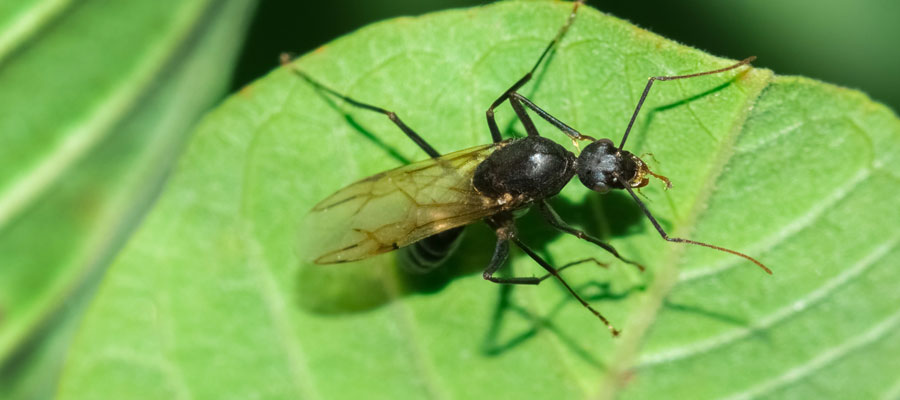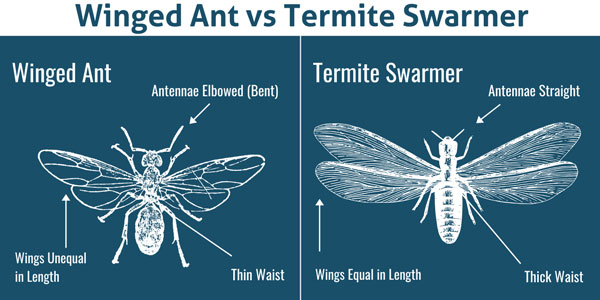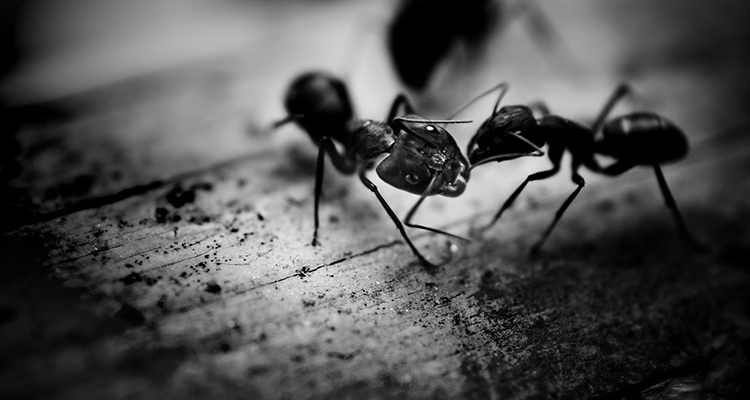Spring is right around the corner, meaning it’s nearly swarming season. Flying ants, also known as carpenter ants, are one of the biggest threats this time of year. They are second, though, to the dangers of termites! Both of these wood-destroying insects may be damaging, but termites are more of a threat to property owners throughout Des Moines. They are also often confused for each other, as they look quite similar as swarmers. It’s important to learn how to tell them apart. For more info on termites vs. flying ants, keep reading for expert tips from the termite exterminators at Springer Professional Home Services!
What do Termites vs. Flying Ants Look Like?
It can be easy to confuse these two wood-destroying insects, but there are a couple of key differences to make note of:
- Carpenter ant swarmers are black in color or occasionally red. Carpenter ants measure 1/2″–5/8″ with antenna bent at a 45-degree angle. Their wings are translucent with a reddish brown hue, laying over the posterior of the ant. Carpenter ant swarmers are bigger than termite swarmers!
- Termite swarmers are black to brown in color and measure 3/8″ long including the wings. Their wings are a translucent to slightly milky or smoky color. Their wings may overlap, and are typically as long as or slightly longer than the body; this is the best way to differentiate them from carpenter ants.
Wood-Destroying Insect Behavior
Carpenter ants establish nests in wood that is already in decay, and later expand into sound wood, insulation, or wall voids. Galleries excavated by carpenter ants appear to have been sanded down. For the most part, carpenter ant damage does not amount to the potential damage of a termite infestation.
On the other hand, termites make their way into a structure around basement windows, doorways, porches, or any other area of the property in contact with soil. Grown colonies can range from 60,000 to over a million workers and can consume nearly 5 grams of wood per day. Because their colonies can grow to such massive numbers, termites are considered much more dangerous than carpenter ants.
How to Get Rid of Termites & Carpenter Ants
If you’ve discovered the signs of termites or flying ants, it’s time to call a termite exterminator. The team at Springer knows how distressing these insects can be, and work to keep you, your family, and your home protected from them all year long. For more information on how we can keep you free of termites and carpenter ants, give our team a call!



